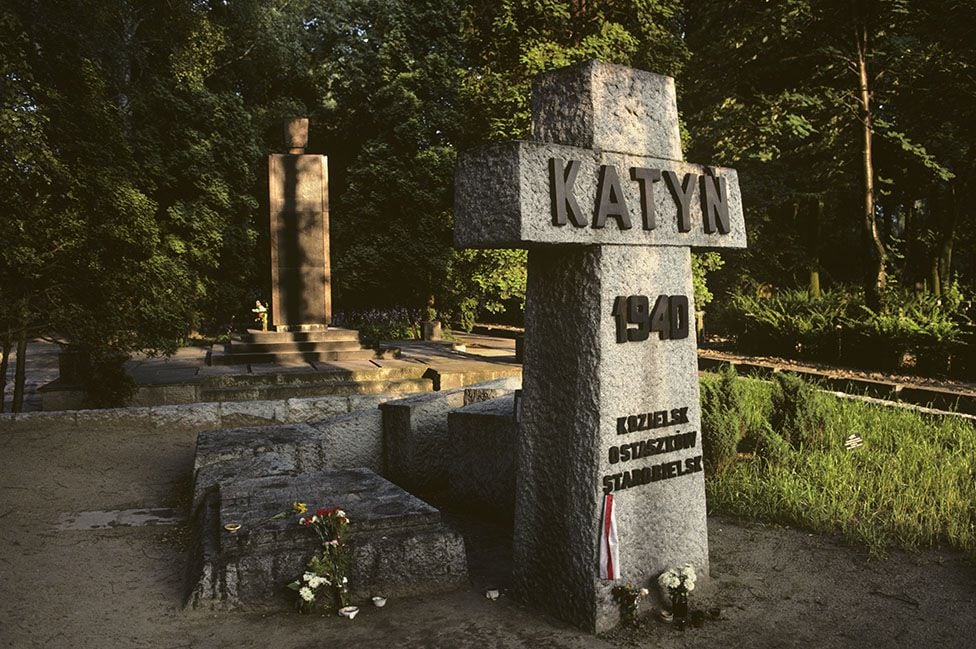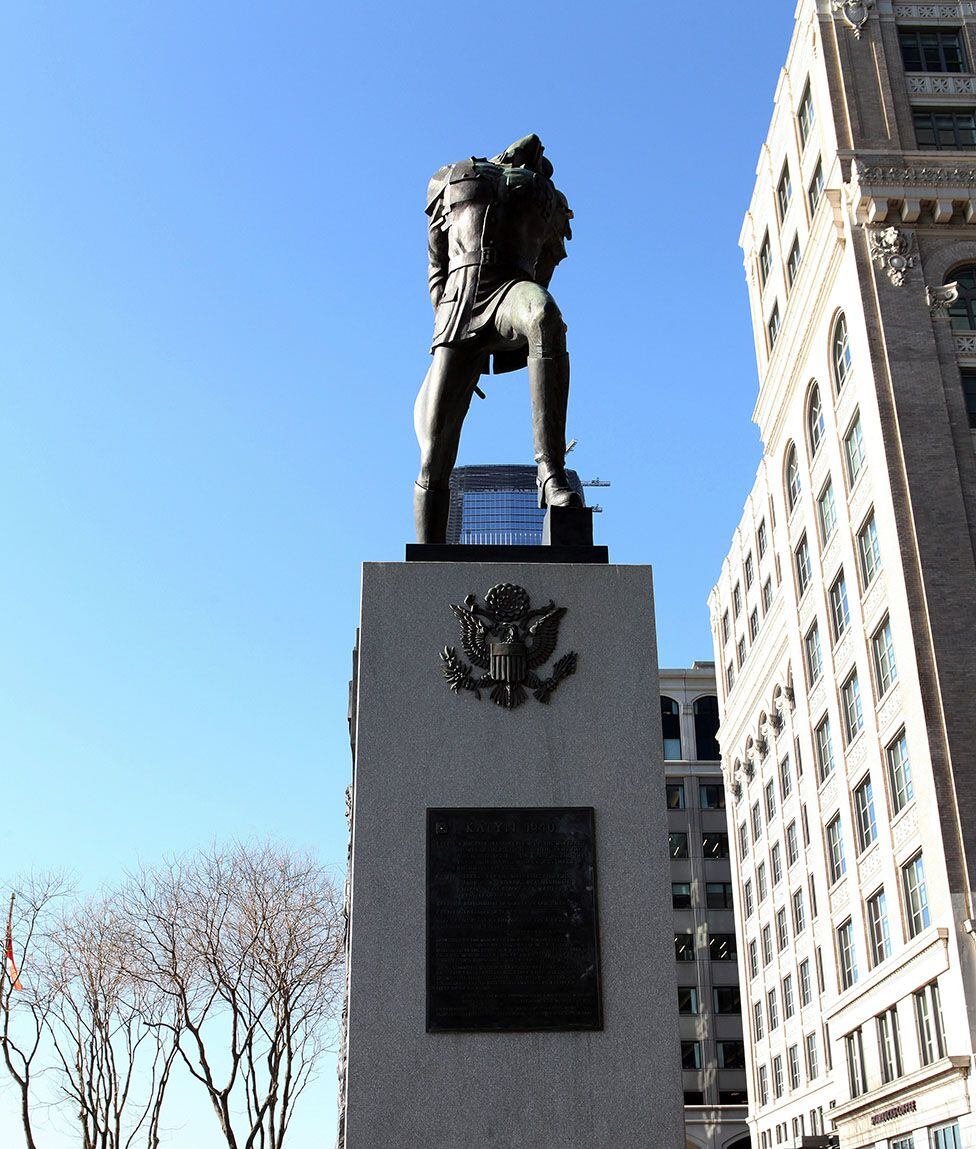The Ukrainian troops who entered the city of Bucha25km northwest of the capital kyiv, found evidence of what appear to be horrific war crimes committed by Russian troops during the month-long occupation.
Any glee they felt after forcing Russian troops out of the area was interrupted by what appeared to be mass graves, bodies of civilians with their hands tied behind their backs, and evidence of the rape and murder of women.
LOOK: “There are no body bags left”: The terrible operation to uncover the horrors committed in Bucha by the Russian invasion
“Now the world can see what the Russian army did in Bucha,” told the United Nations the president of UkraineVolodymyr Zelensky.
But the envoy of Russia At the UN, Vassily Nebenzya, dismissed the claims as a “provocation that was staged.”
LOOK: “I saw how a Russian soldier killed my father”: the shocking testimonies of the survivors of the Bucha massacre
Atrocities committed during a war, of course, are nothing new, but the Russian denial brings up the memory of one event in particular: the massacre in the katyn forestin the east of Polandduring World War II, which the Soviet Union (USSR) successfully passed off as a Nazi atrocity for half a century.
In the spring of 1940, over 4,000 Polish officers were killed in the woods near the Soviet city of Smolensk.
This happened shortly after the USSR, on the basis of a secret agreement with Germany (the so-called Molotov-Ribbentrop Pact), occupied eastern Poland and dragged various prisoners, especially soldiers, to its concentration camps.
Mass graves of Polish victims were discovered near the Russian villages of Kozi Gory and Katyn after Hitler broke the pact with Stalin in June 1941 and German troops invaded Soviet territory as part of the infamous Operation Barbarossa.
Joseph Goebbels’s propaganda machine said nothing until the spring of 1943, when the Nazis needed to cover up similar atrocities on Soviet soil.
In April 1943, the Germans sent an international commission of experts (their experts, of course) to Katyn, where they confirmed that the mass execution had been carried out by Russian troops.
But late that year the Soviet Union recaptured the area and immediately sent its own commission to the site.
In January 1944, the Soviet commission reported its findings that the massacre had not taken place in 1940, as previously thought, but in late 1941, after Germany began to occupy the region from Smolensk.
The Soviet conclusion was clear: the perpetrators It wasn’t Stalin’s troops, but Hitler’s.
LOOK: Why the sinking of the Moskva is a serious blow to Russian morale and its naval strength
Nuremberg trials
The USSR even attempted to include Katyn in the list of indictments that would be leveled against the leaders of Nazi Germany in the run-up to the Nuremberg war crimes trials, effectively making her version the official story of all the Allied powers.
But Nazi documents and related testimony did not support the Soviet account, and it was ruled that the Nuremberg trial would not examine what happened in catyn.
Nevertheless, most of the evidence remained in Soviet hands. The same thing happened with access to the crime scene, since Poland was part of the Soviet bloc.
As a result, the Soviet version of the massacre was only really challenged among Polish émigré circles in the west.
One of the first studies was published in London in 1948. “The Katyn Crime in the Light of Documents” was edited by Jozef Mackiewicz and published in Polish. It was later published in English in 1965.

Meanwhile, the US Committee to Investigate the Katyn Massacre was formed in 1949, and two years later the US Congress established a special commission on the case.
The “Katyn problem” became a Cold War argument that allowed Soviet leaders to dismiss the accusation as “Western propaganda”.
after Stalin
Gradual liberalization under Stalin’s successor, Nikita Khrushchev, did little to change this.
Khrushchev’s “de-Stalinization” only marginally affected Soviet policy toward its satellites.
Rather than admit Soviet guilt over Katyn, the Kremlin threatened to invade Poland (as it invaded Hungary the same year) if he tried to break with Soviet rule.
In 1959, then-KGB Chairman Alexander Shelepin sent Khrushchev a top-secret letter stating unequivocally confirmed Soviet culpability at Katyn.
He noted that the KGB archives had documents referring to the massacre of 21,857 captured Polish citizens since 1940, rather than 1941, which is when the Soviet account dates the massacre.
He suggested that all these documents be destroyed.
Western pressure on the USSR to explain what happened in Katyn continued during the presidencies of both Khrushchev and his successor, Leonid Brezhnev.
Memorials to Polish victims of Soviet crimes were erected in Stockholm in 1975 and in London in 1976.

The term “Katyn” gradually expanded to include crimes committed under Stalin’s command on Polish officers, not only in Smolensk but also in various other places in the Soviet Union: in Russia, Belarus, and the Ukraine.
But the Soviet authorities continued to repeat the lie that the massacre was a German crime. According to Moscow, those who asked for the truth were as propagandists as Goebbels himself.
Glasnost for Katyn
The decisive change took place under Mikhail Gorbachev. In 1987, the USSR and Poland agreed to a joint evaluation of the sources and questioned the versions produced during and after the war by Russian intelligence agencies.
LOOK: Russia shows for the first time “survivors” of the Moskva, the flagship that exploded and sank
The final admission of guilt came about thanks to pressure both from outside the Soviet Union, mainly from Poland, and from within Soviet society itself, as part of a process in which people were trying to come to terms with the dark past of Stalinism.
There was also a need for self-reflection to strengthen the legitimacy of the growing democracy within the USSR.
The Soviet Union finally officially pleaded guilty to the murders of Polish prisoners in April 1990, when Gorbachev handed over a series of documents to Polish leader Wojciech Jaruzelski in Moscow. That ended half a century of Soviet lies.
The world must hope that Bucha does not represent a new era of mendacity to cover up brutality.
* Tomas Sniegon is Associate Professor at the Department of European Studies at Lund University
*This note was published on The Conversation and reproduced here under a Creative Commons license. Click here to read the original version in English.
Source: Elcomercio

:quality(75)/cloudfront-us-east-1.images.arcpublishing.com/elcomercio/GE4DANRNGA2C2MJXKQYDAORRHA.png)


:quality(75)/cloudfront-us-east-1.images.arcpublishing.com/elcomercio/PQIAMHKCYFH3FCE7XOGKDAAWJY.jpg)
:quality(75)/cloudfront-us-east-1.images.arcpublishing.com/elcomercio/X6CNEVPPV5G5NJDR5KKNAGN7EA.jpg)

